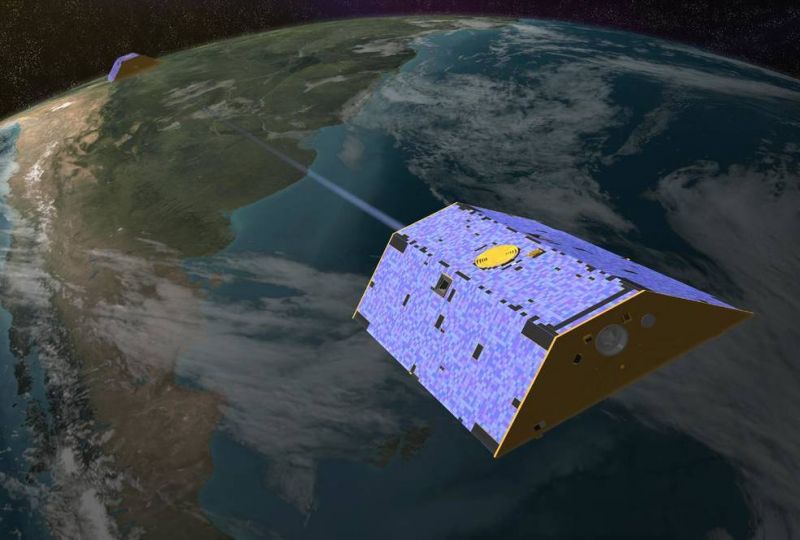NASA's GRACE: What We've Learned from Water in Motion
Published on by Water Network Research, Official research team of The Water Network in Technology
This is a story about GRACE, the U.S.-German Gravity Recovery and Climate Experiment, that taught us a lot about water in motion and how we can track it.

Illustration of the twin GRACE satellites.
Credits: NASA/JPL-Caltech
When you hear news about ice loss from Greenland or Antarctica, an aquifer in California that is getting depleted, or a new explanation for a wobble in Earth's rotation, you might not realize that all these findings may rely on data from one single mission: the U.S.-German Gravity Recovery and Climate Experiment (GRACE). GRACE data, collected from 2002 to 2017 while the mission was active, are still being used to improve our understanding of water in motion and its sometimes surprising effects on our planet. A new paper brings together newly calculated and existing summaries of the major results GRACE has generated, showcasing the breadth of topics the mission has illuminated over the years.
"Water is an important sign of the health of the planet," said Michael Watkins, the original GRACE project scientist and now director of NASA's Jet Propulsion Laboratory (JPL) in Pasadena, California. "But water is hard to track in some forms — for example, polar ice or water stored deep underground. We need to understand those components as well as we understand water in its more easily assessable forms around the globe. That's what GRACE has enabled us to do." Scientists have used this increased knowledge of how water moves and is stored on Earth to understand global climate and how it is changing.
Byron Tapley, GRACE's original principal investigator and the motivating force behind the mission (now retired from the University of Texas at Austin), is the lead author of the new paper. Titled "Contributions of GRACE to Understanding Climate Change" and published in the journal Nature Climate Change, it summarizes the latest results and new insights GRACE has enabled up to the present. The review, which covers aspects of the GRACE measurement technique, scientific breakthroughs and the relevance for climate service applications, was written by a distinguished team of GRACE experts. Most authors contributed to the GRACE mission even before it launched and have done groundbreaking work with its data.
"It was a challenge to write a representative eight-page review of GRACE achievements, which have been documented in over 3,000 peer-reviewed publications," said Ingo Sasgen, GRACE scientist at the Alfred Wegener Institute's Helmholtz Center for Polar and Marine Research in Bremerhaven, Germany, who coordinated the new paper. "We wanted to convey how unique the GRACE mission really was and how important its data are for us to understand how climate change affects water stored in the ocean, the ice and on the continents." Here are a few examples.
Media
Taxonomy
- Research
- GIS
- Hydrodynamics & Water Quality
- Environment
- Water Monitoring